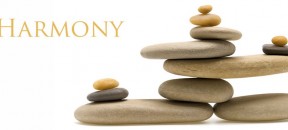
Meditation for the New Age
September 5, 2012 · Maree · Articles · Comments Off on Meditation for the New AgeThe Information Age
It has been said by many, that we live in an age unlike any other. Over the last century, the advancements in technology have allowed us to have immediate access to world news, entertainment, and literature, and are able to communicate with anyone almost instantly, anywhere in the world. We are living in the Information Age.
“Information Age is a name given to a period after the Industrial Age. Information Age is a term applied to the period where movement of information became faster than physical movement, more narrowly applying to the 1980s or 1990s onward.” (1)
With the advancements in recording techniques, transmission and computers, in the 1980’s, it didn’t take long before communication devices became portable and affordable for every household. Communicating via the internet is now commonplace and allows us to receive instant replies from friends & businesses worldwide. The days of ‘snail mail’ are over and we are becoming more and more a society requiring instant information, instant answers… instant gratification. We become impatient if we have to wait for anything. In days gone-by, we waited months for a package from overseas and weeks for a letter – even waiting a day for a reply by mail can be irritating to some of us, when it could be emailed or faxed or send by SMS and received immediately.
Young people today don’t even like to wait for a movie to be released at the cinemas or a TV series to start in the New Year, they just ‘download’ it to their computers and get to see it before their friends. It seems ‘waiting’ is a waste of time. Or is it that time itself is speeding up and we, in an effort to keep up with it, are anxious to fit as much in, and receive as much information as we can, at any given moment?
With the fast pace of life, plus all the other stressors modern man is subjected to (deadline pressure, relationship problems, money problems etc.) we could be creating a generation that is chronically stressed. Perhaps now, more than any other period of time in the history of mankind, we need to be able to clear our minds of unwanted chatter, learn to relax and live in the moment.
The Astrological Ages
As well as evolution of the Industrial Age and the Information Age, mankind has also been evolving spiritually!
In her book “Why People Don’t Heal and How They Can”, Caroline Myss talks about the Astrological Ages which relates to the historical development of human spirituality over many ages. These spiritual ages relate to the human Chakra System and can be correlated to the gradual development of our individual spiritual natures through the course of a lifetime. Each Age generally goes for around 2,000 years and her theory is that humanity has an evolutionary leap on a psycho spiritual level at the change of each Age. (2)
Prior to the birth of Christ was the Age of Aries, the last 2,000 years was the Age of Pisces and we are now in the Age of Aquarius. The Age of Aries related to Tribal Power. During that time the focus was directed towards developing unified tribal communities so that man survived. It began at the time of the Book of Genesis in the Bible and heralded the beginning of a tribal consciousness and tribal identity – a more organized tribal system than the previous Age of Taurus, which was more primeval. They believed in “a God of justice, law and order, a jealous and vengeful God”, (3) which was a reflection of their tribal community.
During the past 2,000 years, the Age of Pisces and the development of the individual, while still being under the control of the tribal hierarchy, people were given freedom to make decisions about who they married and intellectual development was flourishing, but still under the strict rules and regulations of the ‘tribal leaders’. Buddhism, at the beginning of the Age of Pisces, evolved into a compassionate philosophy and allowed the path to enlightenment be available for all humans not just monks. The coming of Christianity heralded the opening of the heart of humanity, with Jesus introducing a father-figure God and openly speaking of love, brotherhood, forgiveness etc. So mankind began to have ‘choice’, which the tribal community had lacked.
The Aries, Tribal mind was externally focused and corresponded with the qualities of the first three chakras. The Pisces Age was focused on our internal selves and the energy of chakras 4 to 7. The Age of Aquarius relates to the 8th chakra and the Symbolic Power. The 8th chakra resonates above our physical body and is always enticing our unconscious self to discover our true energy and nature, “giving us the freedom to embrace all that life is without fear that we are not powerful enough to know life fully”. (4)
One can access this 8th Chakra energy in Meditation, particularly in Tantric Yoga practice. This practice focuses on awakening kundalini energies in the body, via nerve plexuses located in the chakras which align with the spinal column. Once activated in meditation, this energy shoots up from the base of the spine towards the brain, energizing and purifying each chakra and settles just above the head (the 8th chakra) connecting “with one’s divine will and causes the polarization of every cell in the body” (5), producing a form of self-illumination or enlightenment.
The Age of Aquarius heralds the beginning of Symbolic Power, the Golden Age. Aquarius is an air sign & equates to new ideas & fresh thought. In the 60’s the ‘dawning of the Age of Aquarius’ was sung about and the emergence of Flower Power, the search for Nirvana, Women’s Rights, the Sexual Revolution, the Civil Rights Movement, the use of illicit drugs, the Hippy Culture etc., all reflected this search for something else; a step away from the tribal/patriarchal model of religious society, where one followed blindly the teachings of old. At that time, this search for freedom was expressed externally and not internally. Hence the development of a drug culture which sort to externally access this energy of connection with the divine.
During the late 50’s and early 60’s the exile of the Dalai Lama & the upheaval of Christianity following Vatican II, enabled the teachings of the Eastern & Western religious traditions to be more easily available to the ordinary people. People all over the world started, and are continuing this century, to question the traditional religious models. Westerners started investigating and practicing Eastern ways, and a new sense of spirituality and consciousness has immerged, heralding a New Age of awareness, as well as acceptance of all spiritual practices as worthy of respect has accelerated. (6)
Since the 60’s we’ve learnt that this desire to have the Kundalini or Nirvana experience, can be achieved internally and in ways other than using illicit drugs. Aquarian consciousness relates to holism and holistic practices such as vegetarian diets, yoga, meditation, chanting etc. can assist one in the quest for connection with the Divine, once believed to be the experience of only the mystics and saints of the old religious traditions. It also means unity or oneness with people and their beliefs rather than division and separation caused by cultural and religious differences in the Piscean Age.
How can mankind mesh these two ages of development into one? How can we keep up with the advancements in technology & the development of our consciousness or spiritual selves and not succumb to the dangers of living in the fast lane, ie to stress overload?
Fight or Flight Response
Stress is a normal part of life & early man used the “Fight or Flight” response to survive threats in his environment. This response was first recognized by Walter B. Cannon who described it as “the internal adaptive response of the body to a threat”. (7) A perceived threat causes the body to respond by secreting catecholamine or “stress hormones” which arouse key organs preparing the body for fight or flight. In the modern world, prolonged or chronic stress creates the same physiological & psychological changes in the body as when subjected to acute stress, such as a near-miss accident. The stresses we face today are more likely to be psychological or interpersonal and may not be dealt with as early man did in a fighting or fleeing response. These symptoms include: increased heart rate, blood pressure, blood sugar & muscle tension, lowered stomach & intestine function; plus psychological responses such as racing thoughts, anxiety and panic. (8)
If these symptoms go on indefinitely, chronic disease may develop as studies have shown “that the immune systems tends to be suppressed or become less active, the blood cholesterol level rises and calcium is lost from the bones….hypertension, increased muscle tension can lead to headaches or aggravate pain, unusual changes in the intestinal tract can lead to diarrhea or spasms” plus increased susceptibility to colds & flu. (9)
Why has this “fight or flight” mechanism persisted throughout evolution? Is it part of the “survival of the fittest” in our species or have we missed the message of Hippocrates who equated health “to a harmonious balance of mind, body and the environment”. (10) Or is it possible that evolution has not kept pace with modern forms of stress.
Relaxation Response
The term “Relaxation Response” was coined by Herbert Benson of the Harvard Medical School. (11) The nervous system has the capabilities of inducing the Relaxation Response, via the parasympathetic nervous system and will lower heart rate, blood pressure and muscle tension. Stress management techniques, such as meditation, breathing, yoga & exercise are aimed at inducing a positive parasympathetic response to symptoms of stress. Relaxation helps the body compensate during periods of short-term and long-term stress by lowering heart rate, blood pressure and muscle tension. (12)
Meditation
Meditation and relaxation would have to be the answer for the generation of people who are ‘stuck in the fast lane’. It can be done anywhere, anytime, any place. It doesn’t have to cost anything, although there are numerous books, CD’s and classes you can attend to grasp the basic principles of the practice, but basically taking time out, for 10 or so minutes a day to ‘do nothing’ is simply all that is needed.
Meditation can quiet our usually busy minds that have been bombarded by constant communication via telephone, internet, television etc. . It can assist in achieving heightened mental clarity and clear the clutter of a busy life full of activity. Bloomfield claims “Inner silence is crucial for health” and that this deep state of ‘resting’ the mind can create a decrease in heart rate, oxygen consumption, perspiration, muscle tension, blood pressure and levels of stress hormones. (13)
The Age of Aquarius symbolically is the ruler of electricity or energy. We are coming to an understanding of how interconnected we are, and how energy plays such a role in our lives, not only technologically in this Information Age, but spiritually as well. As we become more aware of ourselves as energy systems and how we relate to all other forms of life, an understanding of measuring health not solely as a bodily function but as a management of our entire energy system, will become more apparent. (14)
Today, it is commonly understood that a healthy body is influenced by our thoughts, relationships, work, spiritual practices etc. Just as our body needs proper nutrition, enough exercise, avoidance of toxic substances, our human spirit requires daily nurturing through the practice of prayer or meditation. “These practices nourish the energy system and help unite mind, heart and spirit.” (15)
Following a spiritual practice, such as meditation, can help us understand the role the Divine has in our lives and what our purpose in life is. It can improve our health when combined with a healthy lifestyle and assist us in facing up to the challenges that life presents in a more balanced and inspirational way.
Meditation has to be the simplest, cheapest, most energy & time efficient method of maintaining a well-balanced and healthy life-style in today’s busy world and indeed into the future Age of Enlightenment.
Bibliography:
1.www.en.wikipedia.org/wiki/Information_age
2.Myss, Caroline, 1997 Why People Don’t Heal & How They Can,
Harmony Books, page 67
3.Myss, Caroline, 1997 Why People Don’t Heal & How They Can,
Harmony Books, page 71
4.Myss, Caroline, 1997 Why People Don’t Heal & How They Can,
Harmony Books, page 117
5.Davich, Victor N., 1998 The Best Guide to Meditation, Renaissance Media, page 117
6.Myss, Caroline, 1996 Why People Don’t Heal & How They Can,
Harmony Books, page 86
7.Goleman, Daniel, 1995 Mind Body Medicine, Choice Books, Marrickville, p 22
8.Goleman, Daniel. 1995 Mind Body Medicine, Choice Books, Marrickville, p 23
9.Goleman, Daniel. 1995 Mind Body Medicine, Choice Books, Marrickville, p 23
10.Goleman, Daniel. 1995 Mind Body Medicine, Choice Books, Marrickville, p 22
11.Goleman, Daniel. 1995 Mind Body Medicine, Choice Books, Marrickville, p 24
12.Goleman, Daniel, 1995 Mind Body Medicine, Choice Books, Marrickville, p 25
13.Davich, Victor N., 1998 The Best Guide to Meditation, Renaissance Media, page 23
14.Myss, Caroline, 1996 Why People Don’t Heal & How They Can,
Harmony Books, page 91
15.Myss, Caroline, 1996 Why People Don’t Heal & How They Can,
Harmony Books, page 124


 Follow
Follow





Leave Your Comment → No comments
Maree Kendall - November 2012 Newsletter - Natural Therapy in SydneyBowtechworks
22/02/2013 ·